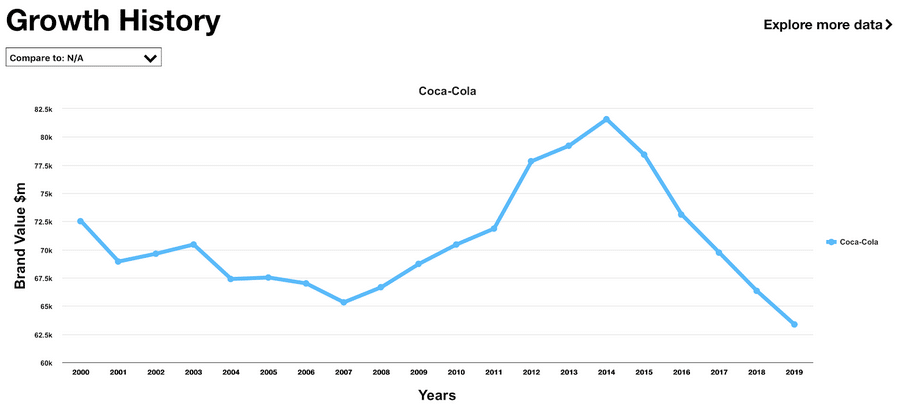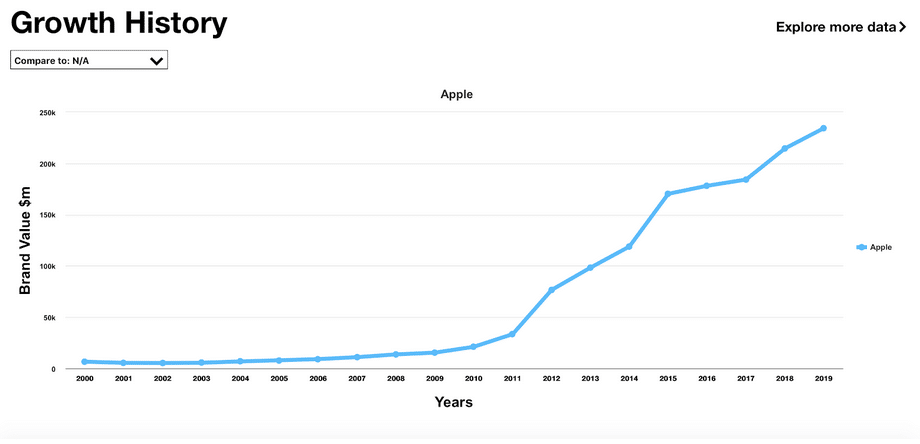Content
- Build Brand Awareness Effectively
- Content Distribution
- Differentiation from Competitors
- Customer Segmentation and Profiling
- Brand Equity
- Increase Sales – Return of Investment
- Create Desire (Wants)
- Customer Retention
Share This
In today’s crowded marketplace, businesses are constantly competing for consumer attention. With more brands and options than ever, standing out requires more than just a great product — smart, strategic advertising.
This makes advertising important, but why is that so?
Estimates suggest that consumers are exposed to thousands of ads each day, across social media, websites, TV, and the real world. Amidst this information overload, effective advertising helps your brand break through the noise and make a lasting impression.
Whether you are advertising for your start-up or for the company you’re working for, one simply can’t deny that advertising has grown to be an essential aspect of every business.
But advertising goes beyond just visibility — it plays a crucial role in shaping perception, influencing decisions, and driving long-term business growth.
Running your first digital advertising campaign? Our Digital Advertising Strategy Guide might be of help.

Image by George Clerk via GettyImages
Ever wondered how many advertisements you’ve seen in a day?
Studies made by the market research firm, Yankelovich, in 2007 have shown that an average person would have seen at least 5,000 advertisements in just one day.
Just imagine the number of advertisements that one has come across in their lifetime.
Digital platforms such as Facebook, Google, and YouTube allow precise audience targeting, ensuring your ads are seen by the right people at the right time, whether they’re discovering your brand for the first time or considering a purchase.
Be it through the internet, print, broadcast, or outdoor media, those advertisements that you have seen are efforts made by companies to increase their brand awareness and entice consumers to purchase their products.
As advertising enables businesses to reach out to a large audience, more consumers can discover the products and services that your company offers while understanding the key features of it within a few minutes or even seconds.
Everyone should know that a consumer’s wants and needs are constantly changing, and advertising about one’s business raises the awareness of their brand and may even uncover a potential audience group one day.
Last but not least, as a startup or new business, one can only rely on advertising to drive awareness and reach out to their target audience. Not only is it a lifesaver for many new businesses, but advertising also helps businesses that have been running for years to reach out to a new market segment that they haven’t been able to penetrate.
For example, your customer wants to look for home decor ideas with no intention to buy anything yet. The main purpose of advertising during this stage is not to make a sale but rather to raise awareness about the products that you can provide to satisfy their needs.
When you are thinking of launching a new product, an upcoming promotion, or raising awareness about the products or services that your company has to offer to the end user, have you ever thought about advertising?
Advertising offers the fastest and most controlled method to communicate your message to a specific audience. Through strategic use of Paid, Owned, and Earned media, businesses can amplify content, launch new products, and reinforce brand identity with precision.
Since advertising allows one to gain control over the modes of distribution, it would be easier for the brand guidelines of the company to be incorporated into the design of the advertisement.

Image from www.pexels.com
When consumers evaluate multiple brands, advertising becomes a key differentiator. It allows your business to showcase its value proposition, benefits, and credibility, helping potential buyers make informed decisions. A well-crafted ad campaign can tilt the scale in your favour during these critical comparison moments.
Also known as the consideration stage of a consumer decision-making process, this is where consumers compare the options available based on objective and subjective characteristics to determine which of the options best suits their needs.
Why does advertising play such an important role when it comes to the ‘Evaluation of Alternatives’ stage in a consumer’s decision-making process?
Here’s a quick question. Would you rather buy from brand A, which has advertised how effective their laundry detergent is at removing stains from clothes, or brand B, which has no advertisements and you have zero idea about the key features of the product?
Advertising is important as it enables brands to display the unique selling points of their products and services in a few minutes or even seconds. It also allows a brand to establish a brand positioning in the minds of their target consumers while associating their brand with an idea or category that they want their consumers to remember them as.
Lastly, the advertisements rolled out by one’s company also invite their target consumers to do a comparison between their brand and their competitors before the consumer decides on which brand they would like to purchase from.
Effective advertising begins with knowing your audience. Customer segmentation, by demographics, behaviour, interests, or psychographics, enables brands to tailor their messages to different audience types. By aligning your ads with your customers’ specific needs and preferences, you significantly increase relevance and engagement.
Another reason why customer segmentation is key is that customers are very empowered in this day and age, and as compared to before, purchasing decisions are made more efficiently. To understand how you can hook your customers in their buying decision process, you have to first understand the behaviours and thoughts of your customers.
Pro Tip: You can use tools like Google Analytics, Facebook Insights, or surveys to build detailed buyer personas. This ensures your advertising speaks directly to your target market’s motivations.
To kickstart your audience segmentation, you can first look at the past purchasing behaviours of your target customers and segment them based on their buying patterns and products they’re purchasing. By doing so, you will be able to foresee what the customer needs and show it to them before they even realise it.
Following past purchasing behaviours would be to keep a lookout for the key social channels that your consumers use. Through understanding how consumers absorb your content, your brand will be able to catch their preferences, and it will be of help in the long run as you’ll know how to advertise your products and services to different groups of audiences.
Finally, you can segment them based on their psychographics. Psychographic segmentation is where consumers are differentiated based on their lifestyle, culture, or traits. This type of segmentation requires one to do more research because, as compared to the demographic and geographic segmentation, the psychographic segmentation does not have data that is as clear and concrete.
This is where you can incorporate polls, quizzes, or even surveys to find out exactly what a consumer is looking for and use that information to advertise to the right audience.
Tip: Create a buyer persona to help provide your organisation with a detailed analysis of what your customers’ needs and wants are. Check out our detailed guide on buyer personas and how to create one.

Image from www.pexels.com
Quoting Steve Jobs, “To me, marketing is about values. This is a very complicated world, and it’s a very noisy world. And we’re not going to get the chance to get people to remember much about us. No company is. So we have to be clear about what we want them to know about.”

Strategic advertising doesn’t just generate leads, it builds brand equity. By consistently delivering your brand message across channels, you reinforce your identity and create associations that resonate with your audience. Over time, this builds credibility, loyalty, and perceived value.
Advertising also creates mindshare, which would eventually be of value to your brand and lead to high brand equity in the long run. If you want to gauge the popularity and awareness of your products, this is where mindshare gets involved. Defined as the amount of consumer awareness or reputation of your brand or organisation, mindshare is measured by the extent of mentions by the public or the media.
Some examples of brands with mindshare and high brand equity are Coca-Cola and Apple, as evident from their brand value over the years.
Over the years, Coca-Cola has used advertising to make people perceive it as a brand that is fun and happy. The largest advertising campaign of Coca-Cola was the 2014 FIFA World Cup campaign, ‘The World’s Cup’ where they featured a series of events like unveiling the photomosaic that they’ve created at the start of the games, to holding the FIFA World Cup Trophy Tour across 90 countries (“Coca-Cola Invites the World to the Opening Match of the 2014 FIFA World Cup™ with Unveil of ‘The Happiness Flag’”, 2014).

Screenshot from interbrand.com
They were successful in using the 2014 FIFA World Cup as leverage to advertise their brand and increase brand equity, as evident from their brand value where it peaked at an all-time high of $81 million, ranking 3rd on the Interbrand Best Global Brands in 2014 (“Best Brands – Interbrand”, 2019). However, as they cut down on advertising in recent years, their brand value as of 2019 was $63 million.
Coca-Cola’s 2014 World Cup campaign exemplifies how associating a brand with global events and emotional storytelling can significantly boost brand equity.
On the other hand, Apple’s brand value has been constantly on the rise over the past 10 years and ranked first on Interbrand Best Global Brands in 2019 with a brand value of $234 million.

Screenshot from interbrand.com
Other than using product placements in TV shows, one other way that Apple advertises its brand is through its annual keynote speeches, where it generates buzz about its newest products. By generating buzz, it means that there would be word-of-mouth marketing involved, and this form of marketing, as mentioned earlier, helps to build the credibility of the brand as well as a consumer’s trust towards it (Smith, 2017).

Image by Nora Carol via GettyImages
Advertising plays a measurable role in increasing sales. A study of over 3,000 companies found that sustained advertising campaigns can boost sales by up to 100%. Whether through lead generation, brand reinforcement, or remarketing, advertising contributes directly to your bottom line. (Hobbs, 2016)
As mentioned earlier in the point about differentiation from customers, in the ‘Evaluation of Alternatives’ stage, advertisements enable consumers to do a brand comparison and also find out more about the key features of the brand. It helps the consumer to decide what they want and to find out whether the brand can satisfy their needs.
If your sales team gets involved, they could also make use of the advertisements and leverage sales, as the consumers would be easier to convince since they have already been exposed to a certain degree of information. If the sale of a product or service is successful, it would also boost your sales team’s morale.
Great advertising doesn’t just inform, it evokes emotion and creates desire. Storytelling techniques and emotional appeals are used to turn wants into perceived needs, increasing the likelihood of purchase. When consumers feel a personal connection with a brand, they’re more likely to act.
Businesses are smart to use emotional appeal and storytelling in advertisements to make wants seem like there are needs, and consumers tend to fall for it, as some advertisements may stir up a certain emotion in the consumer, which makes them feel like “I need it.”
Not only is a business able to use storytelling to entice a consumer to buy a product. It also gives the audience a perspective that the product is in demand, as “The perception that you can afford advertising is often enough to sell and resell prospects and customers alike and makes it easier to get attention for your entire message.”
According to research done by Frederick Reichheld of Bain & Company, if the customer retention rates of a business increase by 5%, profits will increase by 25% to 90%.
To increase the customer retention rate, a business must first ensure that its brand is at the top of the minds of its consumers. Advertisements would be a great way to constantly remind consumers of the reason why they chose the brand in the first place.
Businesses are also able to make use of advertising to cross-sell the other products and services that their company provides because it would give the consumers a sense of familiarity when they are seeking to purchase a new product or service.
Hence, by using advertising to re-engage customers, it would instill brand loyalty in them and turn, increase the customer retention rate and lifetime value.
An example of this is subscription-based services like Spotify and Netflix that use constant advertising, even for current users, to introduce new features and reinforce why users should stay subscribed.
In hyper-competitive industries, advertising keeps your brand top-of-mind. When customers are flooded with options, consistent and relevant advertising reminds them of your value, especially at key moments in the buyer journey. Staying visible ensures your brand is always in consideration.
However, with advertising, a business would be able to vie for the attention of its target consumers and stay competitive in the market as it reminds them that the brand is still present as an option to choose from in their decision-making process.
Last but not least, when a competitor’s product provides similar benefits, it influences a consumer’s decision-making process through constant reminders, as they may purchase from a brand that they feel more familiar with, as compared to a brand they have never heard about.
Advertising isn’t a one-off activity; it’s an ongoing investment in your brand’s future. When done strategically, it raises awareness, nurtures interest, drives conversions, and fosters long-term loyalty. By understanding the many roles advertising plays, you can build more effective campaigns that align with your business goals.
We hope that this article has convinced you that marketing is an important aspect of your business to help achieve your organisational goals.
Keen to see the bigger picture of advertising? Get ready to spiral into the world of digital advertising with our Digital Advertising course.
This course was designed to help you get a better understanding and interpretation of how each digital advertising channel functions and overcome sloppy guesswork and assumptions.
Interested to learn more than just Digital Advertising? We have got you covered.
At Equinet Academy, we cover all 7 Core Modules of Digital Marketing that include:
The completion of these modules will lead the learners to attain a Certified Digital Marketing Strategist V2 Certificate. Please feel free to also browse our wide array of digital marketing courses we offer in-person in Singapore or online.
Receive the latest blog articles right into your inbox.
Ian is the co-founder of Roots Digital, an award-winning digital marketing agency that has served clients like Microsoft, MOE, and Takashimaya across Southeast Asia and trains the Digital Advertising Strategy course at Equinet Academy.
Receive the latest blog articles right into your inbox.
Reader Interactions
1 Comment
Your brand identity is essentially your image and the first thing potential customer sees when they think of you. Advertising is like engraving your company’s image into the customers’ minds so that they can remember it for a lifetime.